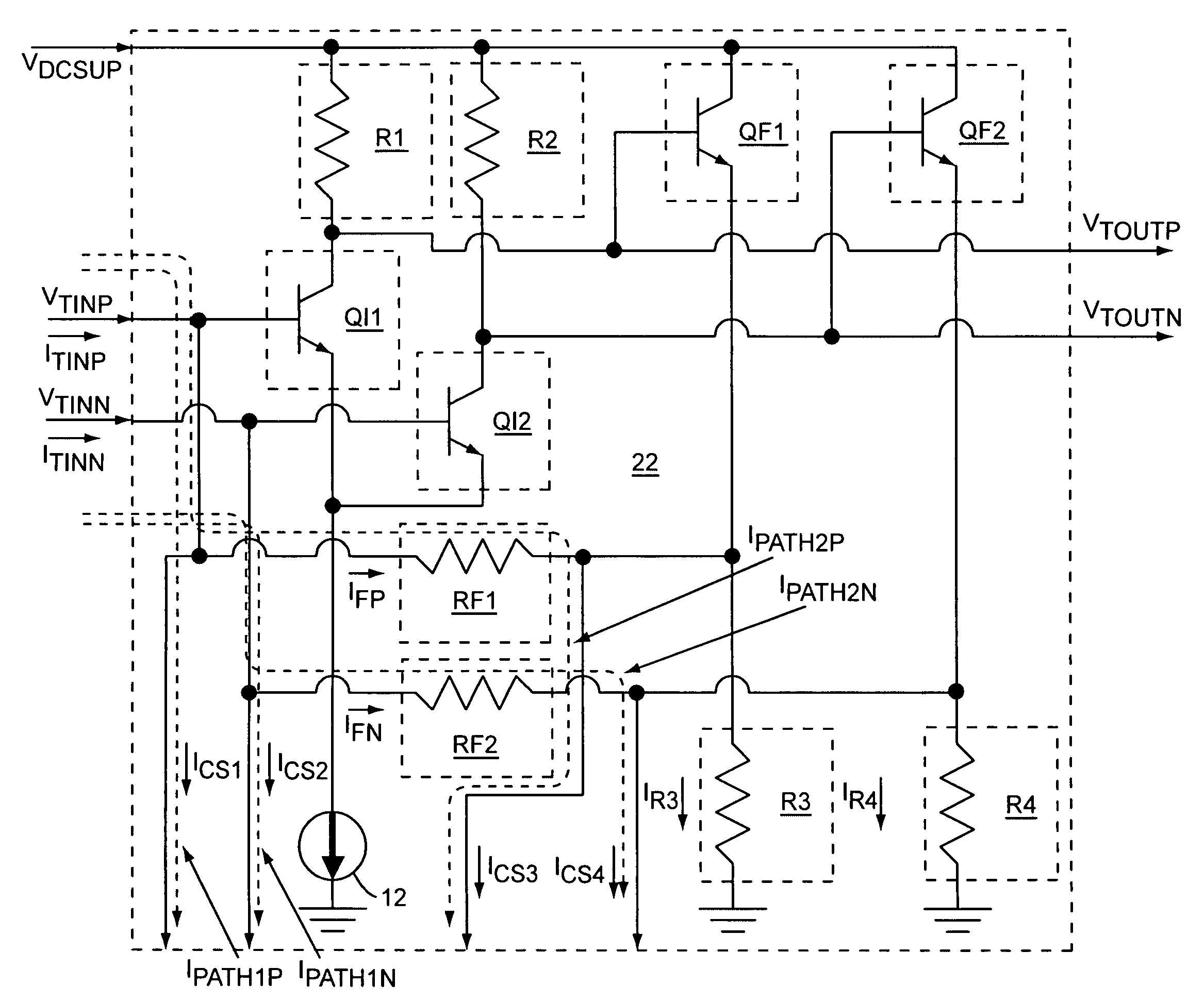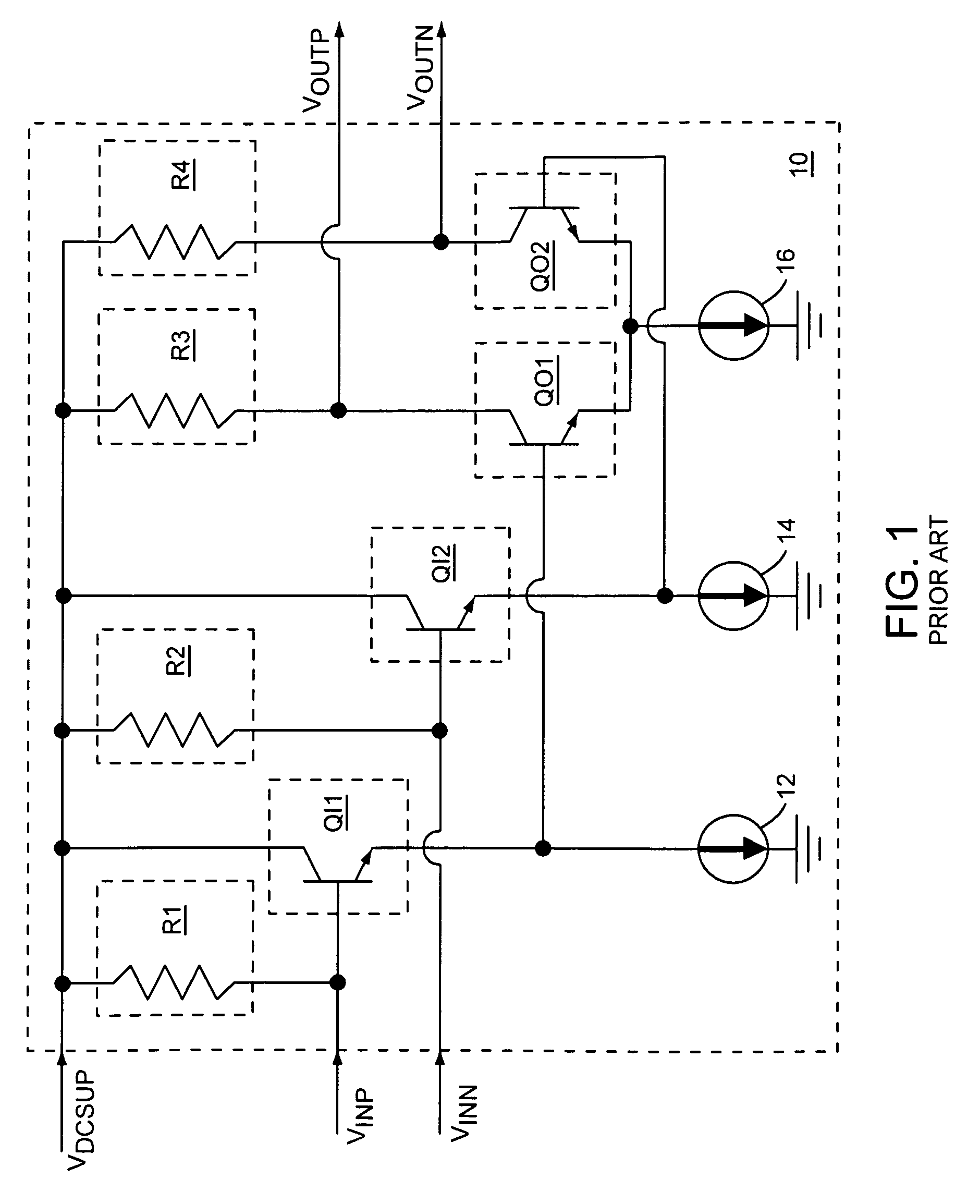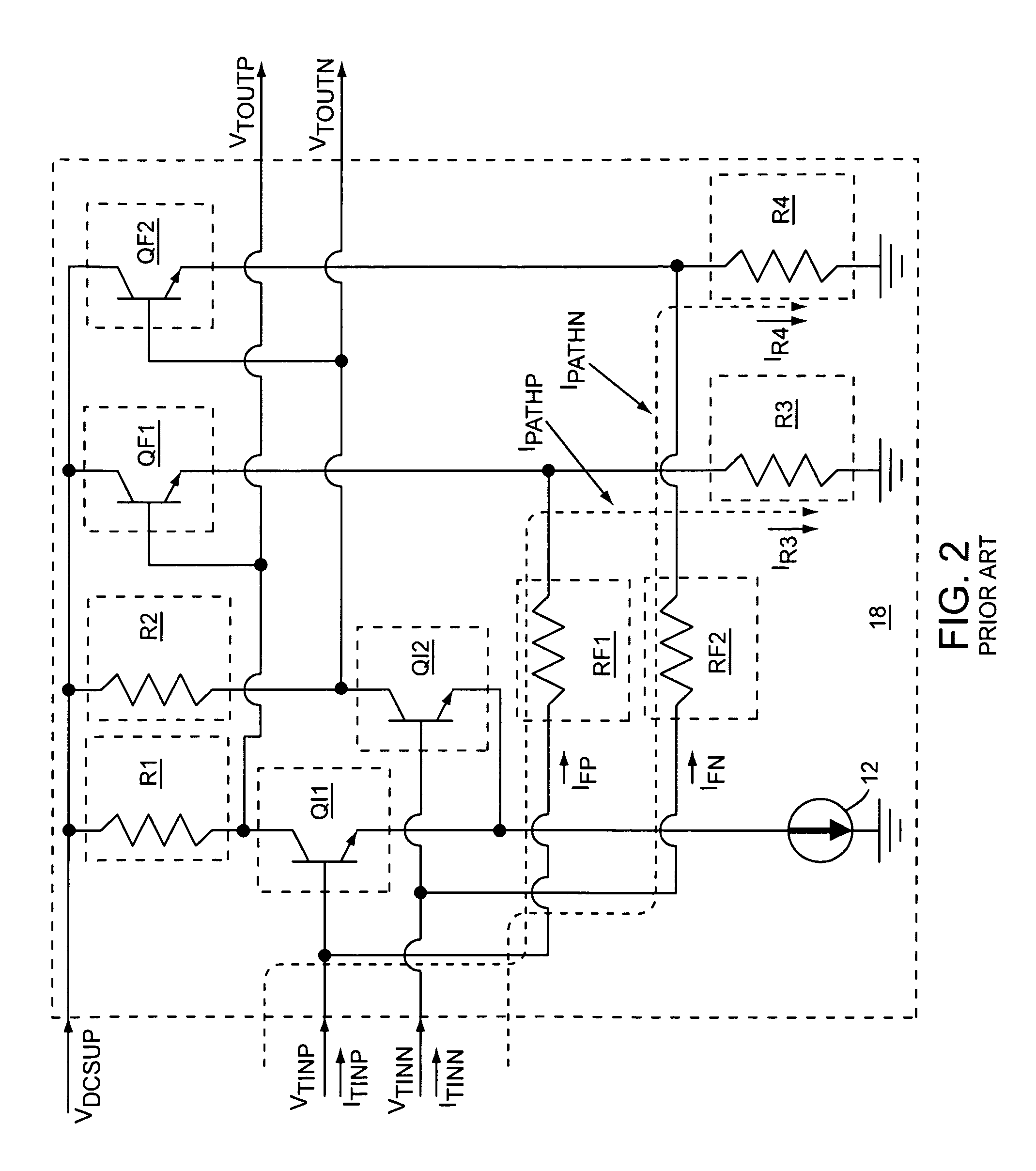Linearized differential transimpedance amplifier
a technology of differential transimpedance amplifier and linearization, which is applied in differential amplifiers, amplifiers with only semiconductor devices, amplifier details, etc., can solve problems such as inability to introduce unacceptable noise levels in future systems, and achieve adequate operating headroom, reduce sensitivity, and common mode magnitude
- Summary
- Abstract
- Description
- Claims
- Application Information
AI Technical Summary
Benefits of technology
Problems solved by technology
Method used
Image
Examples
Embodiment Construction
[0014]The present invention relates to a transimpedance amplifier circuit that includes a linearized differential transimpedance amplifier, a detector, and dynamic current source circuitry, which diverts common mode currents from feedback resistors in the linearized differential transimpedance amplifier to keep the linearized differential transimpedance amplifier in a linear operating range. Magnitudes of the diverted common mode currents from the feedback resistors may be based on a detected magnitude associated with differential input signals that feed the linearized differential transimpedance amplifier. The detector provides a detector output signal to the dynamic current source circuitry based on the detected magnitude associated with the differential input signals, such that the diverted common mode currents are based on the detector output signal. The transimpedance amplifier circuit provides differential output signals that are based on amplifying the differential input sign...
PUM
 Login to View More
Login to View More Abstract
Description
Claims
Application Information
 Login to View More
Login to View More - R&D
- Intellectual Property
- Life Sciences
- Materials
- Tech Scout
- Unparalleled Data Quality
- Higher Quality Content
- 60% Fewer Hallucinations
Browse by: Latest US Patents, China's latest patents, Technical Efficacy Thesaurus, Application Domain, Technology Topic, Popular Technical Reports.
© 2025 PatSnap. All rights reserved.Legal|Privacy policy|Modern Slavery Act Transparency Statement|Sitemap|About US| Contact US: help@patsnap.com



